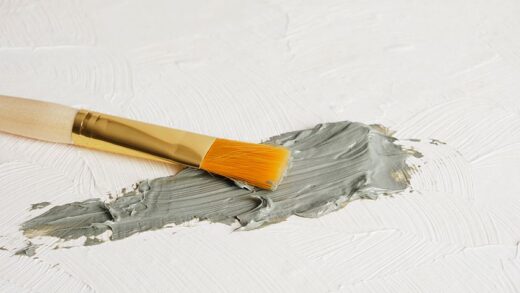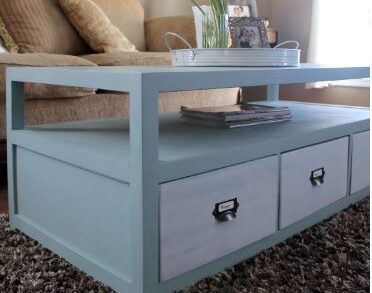Whether the furniture in our homes is sustainably manufactured? Is mango wood furniture friendly to the environment? In this article, issues about mango wood and mango wood furniture are introduced, and you will learn more about them.
Table of Contents
What is Mango Wood?
The mango tree, which also yields the sweet, fleshy fruit known as mango, is the source of mango wood.
The Anacardiaceae family, which also includes the Pistachio, Cashew, and Poison Ivy trees, includes the Mango tree. The tree is “evergreen” meaning it has foliage that remains green and functional through more than one growing season. The average height of mango trees is between 15 and 18 meters (50 and 60 feet).
Due to its dense grains, mango wood is categorized as a hardwood. This indicates that it is a solid and long-lasting wood, making it ideal for furniture. Because of the wood’s density, it doesn’t deteriorate quickly and can retain its high-luster texture for many years. But mango wood is frequently regarded as more reasonably priced and environmentally friendly than other types of hardwood furniture.
What Does Mango Wood Use?
Mango wood, unlike many other hardwoods, is relatively simple to work with, making it a fantastic option for furniture making. Because it is soft, it is simple to cut, shape, and carve intricately. Mango wood is a great option for mango wood furniture it is highly water resistant.
In addition to kitchenware like serving platters, chopping boards, and trays, mango wood is also frequently used for flooring, wall paneling, veneer, plywood, turned objects, musical instruments, and leather curing. The list is truly endless!
What Types of Mango Wood Furniture?
Both indoor and outdoor mango wood furniture can easily be made of mango wood. This furniture includes;
• Table boards.
• Frames for windows and doors.
• items for the kitchen like bowls, trays, and cutting boards.
• for the purpose of paneling.
• for the purpose of flooring.
• Desks and chairs.
• Curing leather.
• Drums and guitars are examples of musical instruments.
• large furniture pieces like kitchen cabinets, display cabinets, and wall cabinets.
What Are the Benefits of Mango Wood Furniture?
There are many benefits of using mango wood furniture:
Eco-friendly and sustainable – Compared to the majority of other hardwoods, mango wood is thought to be extremely sustainable and environmentally friendly. This is so that the mango tree can no longer produce mango fruits, which is the only time it is harvested.
Only mature mango trees that are close to becoming barren are therefore used to harvest mango wood.
This indicates that no healthy mango trees are harmed in order to extract wood. Mango wood is the best option when looking for wood in this day and age when environmental preservation is so important.
Great usability – Mango wood is classified as a hardwood, but it is still more useful than other conventional hardwoods you may have encountered.
You can handle mango wood without the aid of special equipment. Mango wood is also resistant to cracking when exposed to any type of glue, nails, or screws.
High durability – Mango trees, known for their strength and slow growth, are used to make mango wood. Mango wood is one of the toughest woods available because of the strength and density of the slabs that can be produced from it. Also noteworthy is the fact that a protective finish can increase the toughness of mango wood.
Low maintenance – Mango wood typically only needs to be dusted with a soft, moist cloth to remove any dust particles. To prevent your mango wood furniture from drying out, you can also use wax.
Inexpensive – Mango wood is less expensive and more accessible compared to other hardwoods like oak and mahogany. For instance, you can spend between $5 and $15 on a piece of mango wood that is an inch thick.
Different colors and patterns – Mango wood’s wide range of colors is one of the factors contributing to its popularity among homeowners.
You can get furniture with a gray, pinkish, brown, or yellow color depending on how the mango wood has been finished or has developed spalting. Furthermore, you can still get a darker version of the wood depending on the stain that was used to finish it.
Water resistance – Mango wood has high water resistance, making it a great choice for building a deck, patio, and other outdoor furniture. Mango wood has the best water resistance because it can be polished to make it more water resistant.
Designs – Mango wood is still much softer than traditional hardwoods like Mahogany and Oak, despite the fact that it is classified as a hardwood.

What Are the Drawbacks of Mango Wood Furniture?
Prone to insect and fungus attacks – Mango wood, in contrast to other hardwoods, is vulnerable to attacks from woodworms and other insects.
This means that if you don’t apply the necessary chemicals to provide a protective layer to your mango wood furniture, it won’t last as long as you had hoped.
Not strong enough for some furniture – Mango wood, unlike conventional hardwoods, is not appropriate for use with furniture that requires longer plans, like beds and wardrobes. This is due to how easily mango wood can warp.
Prone to discoloration – Mango wood furniture may fade or even crack if exposed to the sun for an extended period of time. If the furniture started out brown, it might eventually get much darker.
How to Care for Mango Wood Furniture?
Your mango wood furniture should be maintained to ensure longevity, just like other wood furniture. We’ve pulled together our top four tips to ensure your furniture stays looking beautiful for years to come:
1. Be wary of liquids – Make sure to clean up any spills right away if they occur on your furniture. Spills may result in irreversible water damage and will eventually wear down the finish.
2. Keep the wood hydrated – Use furniture polish on a regular basis to keep your furniture moisturized. Considering how easily mango wood can become dehydrated, a good polish will not only keep the wood from cracking but also highlight its distinctive grain.
3. Clean with care – When cleaning furniture made of mango wood, it’s crucial that you exercise caution. Avoid using abrasive cloths or harsh chemical cleaners as these can harm the finish.
4. Plan the position – It’s crucial to plan where in your home your piece of mango wood furniture will go. Try to keep the furniture away from heat sources like radiators and bright sunlight. This would almost certainly result in the wood’s discoloration over time.
For those looking for environmentally friendly furniture options for their home, mango wood is a fantastic option. Although we don’t currently use mango wood, we are aware of how crucial environmental preservation is. So as to prevent the premature removal of young trees, we at Grain and Frame are passionate about using locally sourced, sustainably harvested timber.
Do you know all issues about mango wood furniture, and how to care about it? Maybe mango wood furniture will become the next choice for you when you want to buy a table.
FAQ
What is The Origin of Mango Wood?
Mango trees are indigenous to East Asia, Myanmar, and India. Despite being grown most frequently in India, mango wood is also grown in Kenya and China.
Mango trees have a rapid rate of growth; it takes them 10–15 years to reach their full potential. As they grow older and taller, harvesting may become more difficult, and their fruit production may decline. When this occurs, the trees are cut down and new ones are planted so that the mango farmers can continue to produce more fruit. Due to the trees’ quick growth and ease of replacement, as well as the fact that the tree would be cut down anyhow, this keeps the price of mango wood relatively low.
After a mango tree is cut down, a new one is planted, and it takes 15 years for it to reach maturity. Comparatively, it takes an oak tree about 75 years to reach full maturity. This means that using mango wood to make furniture can lessen the destruction of forests that are home to endangered tree species. Mango wood is also frequently regarded as a more sustainable wood option.
What Colour is Mango Wood?
Mango wood’s natural color is typically a golden brown, though there are some variations that have a more yellow tint or have black or pink streaks running through them. Due to “spalting,” a fungus-caused change in the color of wood, the wood is frequently gorgeously discolored. Spalted Mango wood has color streaks that range from light beige to black, and artisans adore the appearance.
This wood is typically slightly darker than oak with a more pronounced grain pattern, similar to oak and mahogany, when unstained and only finished in clear wax. Mango wood also absorbs wood stains exceptionally well, which results in a deep, rich brown color.
Is Mango Wood Susceptible to Termites?
Mango trees are prone to fungal and insect infestation, so treating the wood before using it for furniture is crucial. Mango wood is susceptible to termites if not properly finished and treated, but this is unlikely to happen after that.
How Strong is Mango Wood?
Because of its dense grain, mango wood is incredibly strong and durable. Its Janka hardness rating is 1,120 pounds-force, making it comparable in hardness to North American hardwoods like oak.
Is a Mango Tree a Hardwood?
Given its strength, density, and durability, mango wood is categorized as a hardwood. The wood doesn’t deteriorate easily and, with proper care, can maintain its high-luster texture for many years. Mango wood is a great choice for furniture makers because, unlike other hardwoods, it is simple to cut and reshape.
Is Mango Wood Sustainable?
Being environmentally friendly is one of the main advantages of using mango wood. Due to its cultivation as a fruit tree, mango wood is very sustainable. For hardwood, the trees reach maturity after only about 15 years of growth. At this point, they either stop producing fruit altogether or start producing less. It creates a sustainable cycle of plantation and harvest because mango farmers plant new trees every seven to fifteen years before the older trees become barren. Only the less “fruitful” trees are cut down for wood.



